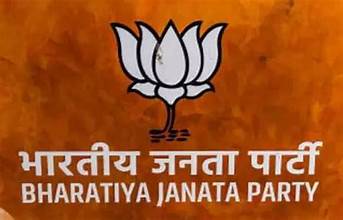Barabanki Lok Sabha seat in Uttar Pradesh witnessed a significant turn of events when the Bharatiya Janata Party (BJP) announced its candidate for the upcoming elections. This decision was unveiled last Saturday, naming the incumbent Member of Parliament, Upendra Singh Rawat, as the official contender. However, shortly after the announcement, a purported video involving Rawat went viral, leading to his own withdrawal from the electoral race. Despite this setback, speculations are rife that BJP might once again nominate a candidate from the Rawat community. Presently, the BJP remains tight-lipped on the matter, navigating through the challenges of damage control amidst these developments.
Barabanki: A Reserved Constituency and the Rawat Influence
Barabanki constituency is reserved for Scheduled Castes (SC) in Uttar Pradesh, where the Rawat community holds significant sway. It’s estimated that approximately 12% of the population belongs to the Rawat community, making them a pivotal demographic in electoral dynamics. Consequently, irrespective of the party affiliation, candidates are often chosen from the Rawat community to contest elections. Parties like the Samajwadi Party, Indian National Congress, Bharatiya Janata Party, and Bahujan Samaj Party regularly field candidates from this community, recognizing its electoral significance.
Rawat Dominance: A Historical Perspective
The political history of Barabanki reveals the dominance of the Rawat community in parliamentary representation. Over the span of 47 years, Rawat candidates have been elected as Members of Parliament 11 times. This streak commenced in 1977 and continues till date, showcasing the enduring influence of the Rawat community. However, there was a brief interruption in 2009 when P.L. Punia won the seat on a Congress ticket. Nonetheless, since 2014, the representation reverted to Rawat candidates. Priyanka Singh Rawat secured victory in 2014, followed by Upendra Singh Rawat’s election in 2019. Rawat was once again nominated by the BJP as its candidate. In the 2019 elections, RamSagar Rawat contested as the SP-BSP alliance candidate, with Tanuj Puniya from Congress securing the third position.
New Entrants and Strategic Shifts
Following the viral video incident, Upendra Singh Rawat withdrew his candidacy, opening up avenues for new contenders from the Rawat community. The upcoming 2024 elections for the Barabanki seat are poised to be intriguing. With Upendra Rawat retracting his name, the BJP is now scouting for fresh contenders. In the legislative assembly elections, Samajwadi Party legislators currently hold seats in Ramanagar, Jaidpur, and Barabanki Sadar. However, neither BSP nor SP has yet declared their candidate for this seat, adding to the anticipation surrounding the electoral landscape.
Chronicles of Barabanki MPs Over the Decades
Since 1952, Barabanki constituency has seen a rotation of MPs from various political affiliations. From Mohan Lal Saxena of the Congress (1952-1957) to Upendra Singh Rawat of the BJP (2019-2024), each MP has left their mark on the region’s political landscape. The Rawat community’s consistent representation underscores its political significance, shaping the electoral narrative of Barabanki over the decades.
Disclaimer : इस न्यूज़ पोर्टल को बेहतर बनाने में सहायता करें और किसी खबर या अंश मे कोई गलती हो या सूचना / तथ्य में कोई कमी हो अथवा कोई कॉपीराइट आपत्ति हो तो वह [email protected] पर सूचित करें। साथ ही साथ पूरी जानकारी तथ्य के साथ दें। जिससे आलेख को सही किया जा सके या हटाया जा सके ।















